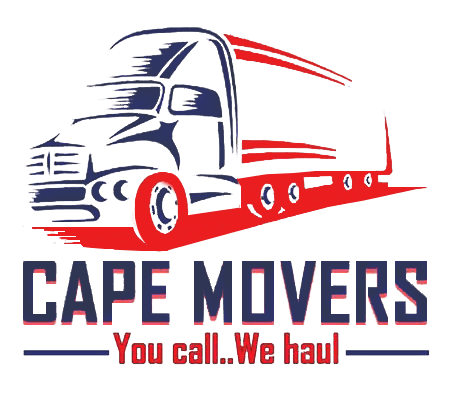Top 10 Moving Hacks To Make Moving Easier
Moving across town or across the country doesn’t have to be a catastrophe. If you take the time to learn proper moving box packing techniques, you’ll soon be settling into your new home with ease.
One of the challenges that nearly everyone will eventually confront is moving. It’s not always comfortable, and it’s rarely entertaining, but it almost always pays off in the end. Avoiding common moving pitfalls and preparing in advance is essential to a successful relocation.
In this article, we will be discussing the best moving hacks you can use to make moving easier.
Best Tips For Relocating To a New Home
1. Book in advance with professional companies
Make sure to plan ahead if you need to hire movers, rent equipment, or have experts like painters or cleaners come to your home. If you wait until the last minute, you might have to spend more or find yourself without a moving truck or helpers during the busy moving season.
2. Start packing as early as possible
Ideally, you will be aware of a move weeks or even months in advance (even if you are unsure of the final destination).
Pack the goods you won’t miss and off-season clothing first. Winter jackets can be packed in advance if you’re relocating in the summer, as may probably books and other sporadic goods. Many objects will already be prepared to move when the time comes, reducing your worry.

3. Create a folder with all the necessary information for your move
Begin gathering new addresses, documents related to rentals or purchases, contracts related to moves, and more in a single folder. (Consider making a paper copy instead of a digital one in case your phone or computer batteries die while you’re moving.) You’ll have the solution (as well as the documentation of contracts, payments, and more) available in case any questions arise during the planning stage or the actual relocation.
4. Cut back on the clutter
It might be exhausting to pack up all of your belongings into boxes, bags, and other containers. By reducing clutter as much as you can, you can make life a little bit easier for yourself. Do a ruthless cleanse of useless objects before you pack a single box. You’ll start life in your new space with a clean slate and have less to pack, move, and unpack.
5. Set up the utilities for your new home

Once the dates are set, get in touch with your utility companies to arrange for service at your new residence. When you finally get there after a long journey, you don’t want to discover that the heat, water, or power isn’t working.
Make a reservation in advance, and document your requests in your moving folder. Request service interruptions on the day you plan to vacate your existing residence at the same time.
6. Pack a separate essentials bag
A change of clothes, a toothbrush, a must-have toy or stuffed animal for the kids, medications, papers, etc., should all be packed into a suitcase or bag that will be carried by you in the car, truck, or aeroplane the night before the transfer. At least you will have some necessities with you if a disaster occurs or any delays arise.
7. Stock up on supplies
Several days prior to your major relocation, stock up on supplies. The last thing you want to do is having to stop to the shop in the middle of packing up your belongings or making sure the house is empty.
Box cutters, adhesive bandages, permanent markers, packing tape, paper towels, and rubbish bags can be ordered or bought. (Even if not all of them are utilised during the move, they will be afterwards.)
Consider renting moving gear from a moving company if you need heavier moving equipment. (If you use a moving company, they probably have one of their own.)

You could be better off buying these products if you relocate regularly. Make sure you have a furniture dolly, furniture pads or covers, and tie-down straps or rope available for the relocation, whether you buy them, hire them, or borrow them.
8. Check that your moving truck has a loading ramp
A truck with a ramp is a must if you’re a do-it-yourself mover. Renting a truck without one may be less expensive, but the time and effort required to lift each box and piece of furniture into the truck will increase the length of your move and cause tired muscles.
9. Request special crating for expensive items

To protect your artwork during a move, be sure to pack it correctly. Regular paper should never be used to wrap oil paintings because it will stick. Make an X with masking tape over the glass when packing photos for relocation to strengthen it and keep it intact if it breaks.
The images should then be wrapped in cardboard between each framed piece for safety and placed in a frame box with paper or bubble wrap.
10. Pack your kitchen with care
There are many various kinds of items that go into packing the kitchen. Find out how to pack dishes before moving: Wrap each dish in packing paper before grouping five or six dishes together. Never pack dishes flat; always on their sides. Additionally, put a lot of paper that has been crumpled up below and above. Paper can be used as a divider between cups and bowls when bundling three or four of them together. Place everything within dish barrel boxes. Use a box with cardboard dividers to assist preserve the glasses while packing them for a move, and wrap them in numerous layers of paper to further protect them.
We provide the best local moving service. For home moves, office relocations or long-distance moving services, get in touch with our team today.
Frequently Asked Questions
How soon do I need to reserve a moving date?
We advise booking your move date at least six weeks in advance. Since there will be more flexibility during the off-season, 3–4 weeks should be adequate.
What is a bill of lading?
The agreement between you and the mover is outlined in the bill of lading. Before the mover loads your belongings, it must be provided to you. You must read the contract carefully before signing it, just like with any other contract. If there are any issues, discuss them with your mover before signing the bill of lading.
